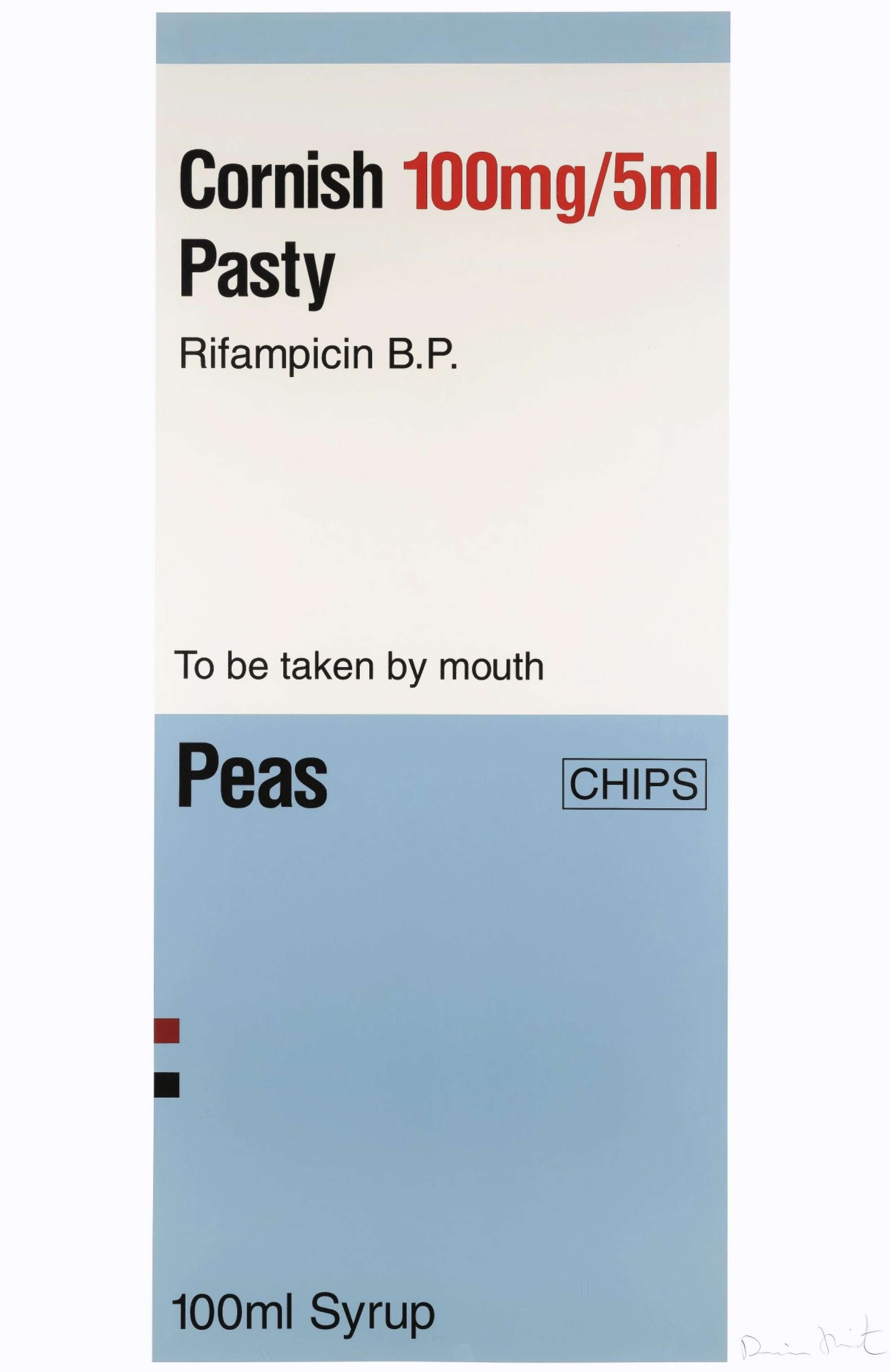
Cornish Pasty

Cornish Pasty
Signed Print
Damien Hirst
£2,950-£4,400
$6,000-$9,000 Value Indicator
$5,500-$8,000 Value Indicator
¥28,000-¥40,000 Value Indicator
€3,400-€5,000 Value Indicator
$30,000-$45,000 Value Indicator
¥610,000-¥910,000 Value Indicator
$3,950-$6,000 Value Indicator
There aren't enough data points on this work for a comprehensive result. Please speak to a specialist by making an enquiry.
153 x 102cm, Edition of 150, Screenprint
Auction Results

Track auction value trend
Meaning & Analysis
Cornish Pasty is a signed screen print by member of the Young British Artist group, Damien Hirst. Created in 1999 and released in an edition of 150, this print is one of thirteen in The Last Supper series. Imitative of pharmaceutical packaging, Cornish Pasty uses a simple, limited palette of four colours and presents the relationship our everyday society has with medicine.
The words ‘Cornish Pasty’ and ‘Peas’ replace the medicine names, though pharmaceutical details such as ‘Rifampicin B.P.’ remain, alongside the words ‘To be taken by mouth’. In place of the manufacturer's logo creates another, using his own name.
In this series Hirst takes everyday, cafeteria foods and holds them up to Christian faith and the perceived glamour of pharmaceuticals. He shows us how these medicines have become commonplace, their packaging familiar and the contents trusted. For Hirst our relationship with medicine is a belief system, very much like art or religion.
Pharmaceutical imagery, glamour and idolisation can be found early in the artist’s career in his Medicine Cabinet series. Empty medicine packaging is displayed in cabinets under titles including ‘Holidays’, ‘New York’ and ‘God’. Later, he uses similar cabinets to display brightly coloured pills and cubic zirconia.
Hirst’s ongoing questioning of human faith can be found again and again throughout his work. Signed and unnumbered (as is true of all prints in the series) this print can be considered an important piece within the artist’s catalogue raisonné.